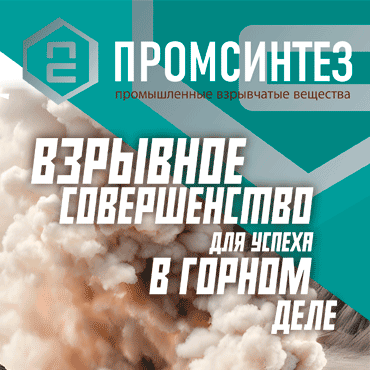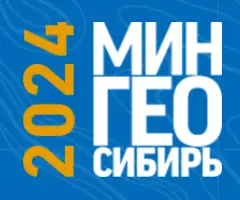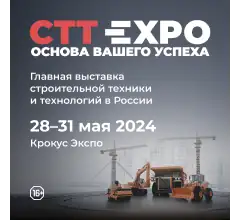Forest industry of the mountainous region: assessment of territorial organization and risks for development (Tuva Republic case study)
 V.O. Oorzhak
V.O. Oorzhak
Tuvinian Institute for Exploration of Natural Resources of Siberian Branch of RAS, Kyzyl, Russian Federation
Russian Mining Industry №4 / 2023 р. 97-100
Abstract: Searching for ways to develop the territories along the eastern border of Russia, including mountainous areas, their manufacturing sectors, among them those in the forestry complex, becomes extremely relevant in current conditions due to the sanctions imposed by the Western countries. In keeping with the goals of this paper and based on studying the stages in the development of economic sectors, analysis and synthesis of data from official statistical sources and authorities as well as modeling of future processes in the mining region, it has been established that in such border mountainous regions of the country as the Republic of Tyva do not fully utilize the existing potential and opportunities for the development of manufacturing, exportoriented industries, especially in the timber industry. In particular, it is shown that in this region, half of the territory of which is covered with forests, there exists a significant potential to increase the volume of harvesting, treatment and deep processing of forest resources (including the volumes of timber up to 1500 thousand m³ per year) and the production of high-quality goods, including the export-oriented ones, provided that environmental protection measures are taken and the level of environmental risks is reduced. The formation of the necessary favorable legislative and legal conditions is proposed for the development of the forest industry in a depressive mountainous region.
Keywords: forest industry, mountainous region, manufacturing industries, export-oriented products, the Republic of Tyva, the industry problems, assessment of potential, favorable legislative and legal conditions
Acknowledgments: The work was carried out according to the state order TuvIKOPR SB RAS. Project No.121031300230-2
For citation: Oorzhak V.O. Forest industry of the mountainous region: assessment of territorial organization and risks for development (Tuva Republic case study). Russian Mining Industry. 2023;(4):97–100. https://doi.org/10.30686/1609-9192-2023-4-97-100
Article info
Received: 20.06.2023
Revised: 24.07.2023
Accepted: 24.07.2023
Information about the author
Valery Okpan-oolovich Oorzhak – candidate of economic sciences, assistant professor, leading researcher of the Laboratory of Regional Economics, Tuvinian Institute for Exploration of Natural Resources of Siberian Branch of RAS, Kyzyl, Russian Federation; e-mail: This email address is being protected from spambots. You need JavaScript enabled to view it. ORCID ID: https://orcid.org/0000-0003-2985-0722
References
1. Batugin A.S. General features of strong rock bursts and induced earthquakes in critical-stress areas of the Earth’s crust. Gornyi Zhurnal. 2021;(1):22–27. (In Russ.) https://doi.org/10.17580/gzh.2021.01.04
2. Emanov A.F., Emanov A.A., Fateev A.V., Shevkunova E.V., Podkorytova V.G., Kuprish O.V. Induced seismicity in coal and iron ore regions of Kuzbass. Russian Journal of Seismology. 2020;2(3):88–96. (In Russ.) https://doi.org/10.35540/2686-7907.2020.3.08
3. Eremenko A.A., Mulev S.N., Shtirts V.A. Microseismic monitoring of geodynamic phenomena in rockburst-hazardous mining conditions. Fiziko-Texhnicheskiye Problemy Razrabbotki Poleznykh Iskopaemykh. 2022;(1):12–22. (In Russ.) https://doi.org/10.15372/FTPRPI20220102
4. Zhukova S.A., Zhuravleva O.G., Onuprienko V.S., Streshnev A.A. Seismic behavior of rock mass in mining rockburst-hazardous deposits in the khibiny massif. Mining Informational and Analytical Bulletin. 2022;(7):5–17. (In Russ.) https://doi.org/10.25018/0236_1493_2022_7_0_5
5. Foulger G.R., Wilson M.P., Gluyas J.G., Julian B.R., Davies R.J. Global review of human-induced earthquakes. Earth-Science Reviews. 2018;178:438–514. https://doi.org/10.1016/j.earscirev.2017.07.008
6. Keneti A., Sainsbury B. Review of published rockburst events and their contributing factors. Engineering Geology. 2018;246:361–373. https://doi.org/10.1016/j.enggeo.2018.10.005
7. Liu J.-P, Feng X.-T, Van Aswegen G., Blake W., Srinivasan C., Rao M. V. M. S., Zembaty Z. Case histories of rockbursts at metal mines. In: Feng X.-T. (ed.) Rockburst. Mechanisms, Monitoring, Warning, and Mitigation. Elsevier Inc.; 2018, chapter 2, pp. 47–92. https://doi.org/10.1016/B978-0-12-805054-5.00003-2
8. Simser B.P. Rockburst management in Canadian hard rock mines. Journal of Rock Mechanics and Geotechnical Engineering. 2019;11(5):1036–1043. https://doi.org/10.1016/j.jrmge.2019.07.005
9. Melnikov N.N. (ed.) Seismicity in mining. Apatity: Kola Science Centre of the Russian Academy of Sciences; 2002. 325 p. (In Russ.)
10. Kozyrev A.A., Batugin A.S., Zhukova S.A. Influence of water content on seismic activity of rocks mass in apatite mining in Khibiny. Gornyi Zhurnal. 2021;(1):31–36. (In Russ.) https://doi.org/10.17580/gzh.2021.01.06
11. Zlobina T.V., Dyagilev R.A. Testing of seismic activity prediction method at the Upper Kama potash deposit. Mining Informational and Analytical Bulletin. 2022;(4):56–66. (In Russ.) https://doi.org/10.25018/0236_1493_2022_4_0_56
12. Guseva T.V., Krupennikova I.S., Mokrova A.N., Perederin V.P. Geophysical satellite monitoring and seismic activity of the NorthWest of Russia. Sovremennye problemy distantsionnogo zondirovaniya Zemli iz kosmosa. 2016;13(5):133–141. (In Russ.) https://doi.org/10.21046/2070-7401-2016-13-5-133-141
13. Kozyrev A., Batugin A., Zuo J., Zhukova S. The impact of surface water seepage on seismicity and rockbursting in mines. Sustainability. 2022;14(22):15414. https://doi.org/10.3390/su142215414 1. Ugrozy i zashchishchonnost' ekonomiki Rossii: opyt otsenki [Threats and security of the Russian economy: assessment experience] / ed. by. S.V. Kazantsev, V.V. Karpov. Novosibirsk, IEOPP SB RAS Publ., 2016, 280 p. (In Russ.) 2. Shavkun G.A., Litvin Ye.A. Lesnaya promyshlennost' Rossii: sovremennyye problemy i puti ikh resheniya [Russian timber industry: modern problems and ways to solve them]. Bulletin of the Chelyabinsk State University = Bulletin of the Chelyabinsk State University. 2019, no. 7 (429). Economic Sciences, vol. 65, pp. 102-109. (In Russ.) 3. Tuvaonlihe. Lesniki Tuvy podveli itogi 60-letney raboty [Foresters of Tuva summed up the results of 60 years of work]. Available at: https://www.tuvaonline.ru/2006/04/09/les.html (date of access: 06.05.2023) (In Russ.) 4. Grigor'yev A.Yu., Laletin A.P., Pakhorukova K.A., Zabelin S.I. Lesa Rossii i izmeneniye klimata [Forests of Russia and climate change]: Analytical report. Moskow, RSEU Publ., 2021. 42 p. (In Russ.) 5. Zander E.V., Startseva Yu.I., Inyukhina Ye.V., Pyzhev A.I. Lesnoy kompleks territorii: ob"yekt intensivnogo promyshlennogo osvoyeniya i regulyator uglerodnogo balansa [Forest complex of the territory: an object of intensive industrial development and carbon balance regulator]. Ekonomika i upravleniye = Economics and Management, 2009, no 16 (109), pp. 43–51. (In Russ.) 6. Krasikov I.I., Shevelev S.L. Struktura lesnykh massivov v Respublike Tyva [The structure of forests in the Republic of Tyva]. Krasnoyarsk, SibGTU, 2013, 119 p. (In Russ.) 7. Sumarokov A. Perspektivy razvitiya lesnoy industrii respubliki Tyva [Prospects for the development of the forest industry of the Republic of Tyva]. Timber industry complex of Siberia: Electronic journal, 2019, no 1. Available at: https://lpk-sibiri.ru/investment-projects/perspektivy-razvitiya-lesnoj-industrii-respubliki-tyva/ (Date of access: 06.06.2023). (In Russ.)







